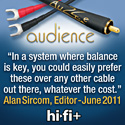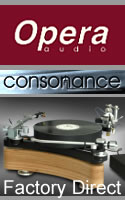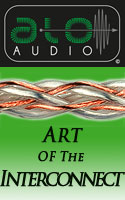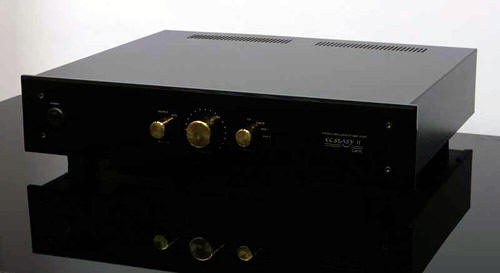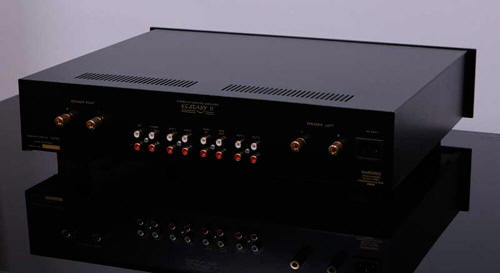|
|
You are reading the older HTML site
Positive Feedback
ISSUE
58
dayens Ecstasy Integrated Amplifier as reviewed by Larry Cox
I walk my son to school every morning. I am grateful for the opportunity to share time with him, once we're finally out the door. Why, I wonder, does it always take so long to get out the door? Why are sox so hard to put on for a child whose bewildering mastery with the Wii controls seems impossible? The age old problem of getting dressed in a timely fashion seems insurmountable for him, yet in modern complexity, he's a master. I was thinking about this paradox as we walked past a really nice looking 56 Chevy 4 door. It's a car that looks terrific, has plenty of human space inside for sitting and massive amounts of free real estate for working on the motor. It's more than fifty years old, way less sophisticated than the currently available cars, but it's got something new cars don't; style and a quality that warrants fixing way after it's "life." While it lacks some of the creature comforts of modern cars, it's something you could, if you wanted, fix for your life, instead of Chevy's designed obsolescence. It reminded me of the Dayens Ecstacy II integrated from Serbia I've had in for review. This is a big, heavy integrated amplifier pumping out 90 watts into 8Ohms in a stamped metal chassis with a suave black acrylic face plate. At 4" 18.5" by 14" (HWD), it's a lot like the old Chevy. Though it's not as sleek and cutting edge looking as some modern competitors, it's built the way Chevies were made in the 50's, to last. And the unoccupied space and layout make this an excellent amplifier to work on, should work become necessary, in say, fifty years.
Dayens is a Serbian designer and manufacturer of hand made audio gear, building everything but a source component. Their footprint in the U.S., internationally and on the internet is small and light despite twenty years in business. There you have the Dayens biography, or at least as much as you would if you went to their web page. The Ecstacy II possesses five line level inputs. Its twenty-two pounds are primarily due to the large transformer that takes up perhaps a third of the internal real estate, though quite a bit of the interior remains empty. The Dayens' price benefits from Serbia's cost of living being amongst the lowest on the planet, which makes it tough for a Serb, but lowers the entry cost for a well made amplifier. Labor costs may allow this well made and handsome unit sell for a minimal cost of $1500. Sure the purchase price might be more than some are willing to pay, but the Dayens is well built and for me its costs are justified. My initial interest in the Dayens came because I was looking to augment my system with a solid state preamp. Our resident Wii Master has taken over my system. These days my system has morphed from being primarily for music to one giving stage time and voice to Super Mario and movies. I remain quite happy with my E.A.R. 864 preamp, but my interest in a solid state preamp arose because too often for my taste, the five NOS Mullards ($60/each!) were left burning for days on end when my wife or son forgot to turn the system off. Being a cheapskate, it was bugging me big time to imagine the electrons leaking out into the ether for no reason better than forgetfulness. Dayens is the maker of the Ampino, a "no frills crowd" darling. A reputedly good sounding, twenty-five watt integrated with one input selling for around $750. I thought, hmmm, if that sounds good, perhaps Dayens' passive preamp would be great. I contacted Michael Gill, Dayens' U.S. importer to find out. It's not a unit he imported, and at $4000 or so, it was out of my range as a backup preamp to my reference. Michael was so obliging and enthusiastic about the Dayens line I offered to write about the Ecstacy II integrated amplifier. Unfortunately, after offering, I realized that the Ecstacy II would not work with my powered speakers or show its full glory because my reference system is powered, eliminating the Ecstacy's amplifier from the circuit and most of my important signals are balanced. While the latter seems curable, the single ended inputs (RCAs) on the Ecstacy were too close together to allow using an XLR to RCA adapter. So, I put together a system that would sound similar to my reference system. I chose the ATC SCM7s I sold to my brother in law a while ago because it is timbre matched to my powered speakers. Timbre matched to me means that all ATC speakers sound very much alike, just a "bigger" sound or deeper bass coming with the bigger speakers. What I've also learned over the past few years with the active ATCs is that active ATCs are way more revealing than their passive speakers, fine though the latter are. I also lassoed the Parasound electronics, Parasound HCA1000MkII amp and P/HP Preamp, I had purchased for the SCM7s about eight years ago to create a surrogate system. The system was lower in resolution than my reference, but again possessed the same timbre and one that is a pleasure to listen to. The electronics for this surrogate reference system several years ago retailed for about two thirds of what the Ecstacy does now. Though only one hundred watts into a small 84dB speaker the Parasound electronics were robust and full sounding. Comparatively speaking, my reference system is cleaner, faster and more transparent sounding than the surrogate reference system. First, I took the Dayens integrated for a visit to Francisco Duran's system. Frank recently upgraded his Marantz PM-15S1G integrated and Marantz SA15S2 SACD player with the upgradecompany.com. They're both REALLY good, not for the money, just really good. Really. Francisco uses Tonian DL-1 speakers with the modded Marantz components. The Tonians are a relatively easy load and quite efficient (95dB). With Frank's electronics the Tonians have a light and airy presentation with bit more articulation, and nice bass response. They're a bit more forward than my reference system, though they're not bright. The Dayens in Frank's system was not as light in touch, nor as detailed, but was rather warmer in the midrange, giving a nice meat and potatoes presentation, as well as imaging quite nicely. As part of the balancing of virtues and performance, keep in mind the Marantz PM-15S1G not only retails for $500 more unmodded than the Dayens, but also bears $1000 worth of after market modifications. No problem there, but the Dayens was again, in the ballpark with the heavily modified Marantz whose cost was $1500 more, or double the price. Good job Dayens, Bass was plumbed well, though the Tonians don't go much below 40Hz with some roll off. Bass was rhythmic and articulate without overhang, which was essentially consistent with the sound through the Marantz integrated. The Dayens was a little forward in the midrange with the Tonians, not quite as much as the Marantz, and the treble was not quite as extended, a little softer and less open sounding than the Marantz. They were not, however, rolled off on the top end, just missing some of the openness that the modded Marantz has. And that openness might be a function of the slight forwardness. In short, the 56 Chevy, er, Dayens Ecstacy was fighting a good fight in a price class way over its head, similar in sound, but at half the price. To provide a little context of how good the modded Marantz gear is, which I think tells you how good the Dayens is, I compared the preamp output stage of the PM-15S1G to my E.A.R. 864 and found the modded unit superior in imaging, pace and frequency extension. It was close to the E.A.R. in the quality of its timbre, too, though the tube amp had a more relaxed presentation. To me, the modded Marantz products were a much better match in my system than in Frank's, but that's with just a few hours of listening at my place. Ok, enough digression, and on to listening to the Ecstacy in my house. The old Parasound electronics are in the same league as the Dayens, when paired with the ATC SCM7s, but the Dayens would be at the head of the class and the Parasound pair would be in the middling section. The Ecstacy provided a superior, more controlled and lighter, more delicate touch and more artisanal feel for music than the Parasound. The Dayens' character was more relaxed, like the ATCs, themselves with the right equipment. Bass was not as deep with the little 7s (7 liters of internal volume of the speaker) which was as expected. The 7s belong in a much smaller, less cavernous space than my listening room, which is what prompted their sale to my brother in law. With the Dayens providing power, bass was a bit plummier not normally a feature of ATC speakers. The forward midrange I heard from the Dayens with the Tonians was completely absent with the ATCs. I picked some female vocal recordings that can sound a bit bright and forward from The Story's "Angel in the House" to Mary Chapin Carter's "Come on, Come on" through the SCM 7s. The Ecstacy revealed a realistic if slightly warm sounding vocals. Pulling out male vocals like Andrea Bocelli's "Romanza," and Andreas Scholl's "The Voice" showed just a wee bit of thickening in the vocal range making vocals appear a bit less transparent and reducing intelligibility a bit, though my short comings with both Italian and German should probably factored in, too. This intelligibility function suggests that, in my surrogate reference system at least, the Dayens warmed the mix a bit. I found the listening experience pleasurable, though it did not produce the microscopic detail some listeners crave. Better recordings yielded much better sound from the Dayens. Sending high quality digital files from my MacBook to hiFace to DIY Buffalo DAC yielded very nice sound with an increasingly "light touch" on music in the upper midrange, like Love is Stronger than Death by L. Subramanian and Larry Coryell a 24-bit 88.2kHz recording from HDD Tracks and a collection of tracks from Reference Recordings "First Sampling: Classics" which are HRX 24-bit 176.6kHz classical recordings. Both music collections were really awesome certainly raising the Dayens' apparent pedigree. Clearly, with a better source the Dayens opened up emotionally as well. Treble performance was invisible, which is to say a largely unnoticeable presentation, unlike its comparatively rolled off sound in Francisco Duran's system. Overall, the performance of the Dayens with the high resolution sources was very good for a close to entry level system. In order to give the Ecstacy its opportunity to arouse my interest further, so to speak, I also tried a pair of Ciamara ES1 speakers (89dB, though the manufacturer specifies 150 watts at 8 ohms, nearly twice the Ecstacy's output). The ES1s are a quarter-horse retailing for a pack of cigarettes short of $8k. The ES1s are a true audiophile reference. Good as the SCM7s are, the bigger and seven times more expensive ES1s were patently better. They're a rather revealing speaker and should allow the Ecstacy to reach orgasmic heights, or well... sorry. Enough of the awful punning. Plugged into the Ciamara ES1 speakers, a forward midrange returned, though treble extension sounded a bit more like the Marantz gear with the Tonian speakers, which is to say that the treble was open and lightly detailed. I ascribe the forward nature of the Dayens to incompatibility with the Ciamarra ES1s, primarily because they were probably underpowered for the job. The Ciamarras did, however, sound much better when played loud, excepting for the midrange which continued to sound a bit hot. Comparatively speaking the Parasound products were a more robust and favorable match with the ES1s, though they were also "duller" sounding and more dynamically muted overall, perhaps this contributed to the midrange not being as forward. I am not sure what to conclude about the Ciamara's role in the sound as I did not have any ideal amplification candidates on hand. Splitting the difference between the Parasound and the Dayens would probably be the ideal mix, but... well there you have it, an imperfect world, yet again. Darn. Big surprise here, the Dayens Ecstacy II is not perfect. Heavens to Murgatroid! Like the 56 Chevy, the Dayens Ecstacy II is not built for speed, but for comfort. It's robustly built with good parts. Should you be a modder and want to play with the innards of the Ecstacy there's room inside to play without having to be a contortionist surgeon. With a moderately efficient speaker and a flat frequency response like ATC and a good source, the Dayens Ecstacy II deserves a listen, it could be the 56 Chevy you keep in your listening room. Larry Cox
Ecstasy II Integrated
Dayens
|
